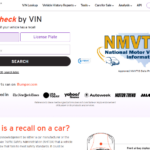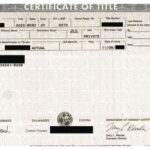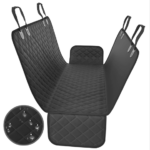A memorandum title, also known as a memo title, is a legal document that can only be used to register and title a car in Ohio, not in other states. It is issued when there is a lien holder on the title. The original title with the lien attached is held by the lien holder or the title bureau.
A memorandum title is different from a certificate of title, which is a legal document that can be used to sell or transfer a car.
Memorandum titles are commonly used in Ohio when a vehicle has a lien on it. The lienholder retains the original title, and the car owner receives a memorandum title.
The memorandum title is a temporary document that allows the owner to register and drive the car while the lien is in effect. Once the lien is paid off, the owner can apply for a new certificate of title.
It is important to note that a memorandum title is only valid in Ohio. If the car owner wants to sell or transfer the car to someone in another state, they will need to obtain a certificate of title. Additionally, if the car owner moves to another state, they will need to obtain a new certificate of title in that state.
Understanding Memorandum Title

When writing a memorandum, it is essential to include a properly formatted memorandum title. The title should be clear and concise, providing the reader with an idea of what the memo is about. The memorandum title should be placed at the top of the page, centered, and in bold.
The memorandum title should include the word “Memorandum” or “Memo” followed by a brief description of the subject.
For example, “Memo: New Meeting Schedule” or “Memorandum: Budget Cuts for Q1.” It is important to keep the title short and to the point, as it will be the first thing the reader sees.
In addition to the memorandum title, it is also important to include a subject line.
The subject line should be placed below the memorandum title and should provide additional detail about the subject of the memo. The subject line should be in bold and should be brief, typically no more than one sentence in length.
When writing a memorandum, it is important to use proper headings and subheadings to organize the content. Headings should be in bold and should clearly indicate the topic of the section. Subheadings can be used to further divide the content into smaller sections.
Finally, when writing a memorandum, it is important to use clear and concise paragraphs. Each paragraph should be focused on a single idea and should be no more than a few sentences in length. This will help to ensure that the reader can quickly and easily understand the content of the memo.
In conclusion, when writing a memorandum, it is important to include a properly formatted memorandum title, subject line, headings, and clear and concise paragraphs.
By following these guidelines, the writer can ensure that the reader can quickly and easily understand the content of the memo.
Key Elements of a Memorandum Title
A memorandum, commonly known as a memo, is a brief written communication used in an organization to convey information to a specific audience. A memo title is an essential element of the memo that conveys the purpose of the communication.
A well-crafted memo title should be clear, concise, and informative. Here are the key elements of a memorandum title.
To and From
The memo title should include the names and job titles of the intended recipients and the sender. This information helps the recipients to identify the sender and the intended audience. For example, “Memo to Marketing Team from Sales Manager.”
Date
The memo title should include the complete and current date of the communication. This information helps the recipients to know when the memo was sent and to prioritize their response. For example, “Memo to Marketing Team from Sales Manager, November 20, 2023.”
Subject
The memo title should include a subject that summarizes the content of the memo. The subject should be highlighted in some way, such as bold, italic, or all caps. This information helps the recipients to know the purpose of the memo and to prioritize their response.
For example, “Memo to Marketing Team from Sales Manager, November 20, 2023, Subject: New Sales Strategy.”
Your Name and Job Title
The memo title should include the name and job title of the sender. This information helps the recipients to identify the sender and to know their role in the organization. For example, “Memo to Marketing Team from John Smith, Sales Manager, November 20, 2023, Subject: New Sales Strategy.”
Closing and Signature
The memo title should not include a closing or signature. These elements are included at the end of the memo.
The closing should be brief and professional, such as “Sincerely” or “Best regards.” The signature should include the name and job title of the sender. For example, “Sincerely, John Smith, Sales Manager.”
In conclusion, a well-crafted memo title is an essential element of a memo that conveys the purpose of the communication. The key elements of a memorandum title include to and from, date, subject, your name and job title, and closing and signature.
By including these elements, the memo title can effectively communicate the purpose of the memo to the intended audience.
Specific Applications of Memorandum Title

In Motor Vehicle Transactions
A memorandum title is a document that is used in motor vehicle transactions. It is issued when there is a lien holder on the title, and it can only be used to obtain license plates and registration.
The original title with the lien attached is held by the lien holder or the clerk of courts. The memorandum title cannot be used to sell or transfer the car.
In Business Communication
A memorandum title is also used in business communication, such as email, letter, circular, minutes, and attachments. It is used to give a brief summary of the discussion, context, problem, and specific task or action required.
It is a useful tool for keeping track of the progress of a project, and it can be revised as needed to reflect changes in the ETA or other details.
In Project Management
In project management, a memorandum title is used to give a brief overview of the project, including the context, problem, and specific task or action required.
It is used to direct the team members and to request specific information or action. It can be used to summarize the discussion and to provide a list of sources or methods used in the research.
In Research and Academics
A memorandum title is also used in research and academics. It is used to give a brief summary of the research project, including the context, problem, and specific task or action required. It is used to direct the research and to request specific information or action.
It can be used to summarize the discussion and to provide a list of sources or methods used in the research.
In Real Estate Transactions
A memorandum title is used in real estate transactions to show that a lien has been placed on a property. It is used to provide proof of ownership and to show that the property has been purchased by an individual or a private entity.
It is also used to show that a power of attorney has been granted to a specific person or entity.
In summary, a memorandum title is a useful tool in many different contexts, including motor vehicle transactions, business communication, project management, research and academics, and real estate transactions.
It is used to provide a brief summary of the context, problem, and specific task or action required, and it can be revised as needed to reflect changes in the ETA or other details.
Creating an Effective Memorandum Title
The title of a memorandum is the first thing readers see, and it can make a big difference in whether they decide to read the memo or not.
A well-crafted title can grab readers’ attention, convey the memo’s purpose, and make it easy to find the memo later. Here are some key recommendations for creating an effective memorandum title:
Keep it concise
A memorandum title should be short and to the point. Ideally, it should be no more than a few words or a short phrase. This helps ensure that the title is easy to read and remember. A long or convoluted title can be confusing and may turn readers off.
Make an argument
The title of a memorandum should make an argument or convey a point of view. It should not simply summarize the contents of the memo. A strong title can help persuade readers to take action or change their minds about a particular issue.
Include key facts
The title of a memorandum should include key facts or information that readers need to know. This can help them understand the purpose of the memo and what it is trying to accomplish. For example, a title might include the date of the memo, the names of the recipients, or the subject of the memo.
Use formatting to make it stand out
The title of a memorandum should be easy to read and stand out from the rest of the text. This can be accomplished by using bold or italic font, or by placing the title in a different color or font size.
However, it is important to use formatting sparingly and not to overdo it, as this can make the title look unprofessional.
In summary, creating an effective memorandum title requires careful thought and attention to detail. By keeping the title concise, making an argument, including key facts, and using formatting to make it stand out, writers can create a title that grabs readers’ attention and conveys the memo’s purpose.
Examples and Templates of Memorandum Title

The title of a memorandum is an essential element that gives the reader an idea of what the memo is about. A well-crafted title should be concise, informative, and engaging. Here are some examples and templates of memorandum titles that can help you create an effective title for your memo.
Examples of Memorandum Title
- “New Company Policy: Dress Code Update”
- “Reminder: Upcoming Team Meeting on Project X”
- “Announcement: Employee of the Month Award”
- “Request for Approval: Budget Increase for Q3”
- “Urgent: IT System Maintenance Scheduled for Friday”
These examples of memorandum titles are clear, informative, and to the point. They provide the reader with a quick summary of what the memo is about and what action is required.
Templates for Memorandum Title
- [Subject Line]: [Action Required]
- [Announcement]: [News or Event]
- [Reminder]: [Upcoming Meeting or Deadline]
- [Request for Approval]: [Budget or Resource Allocation]
- [Urgent]: [Action Required]
These templates for memorandum titles can be used as a starting point for creating your own title. They provide a structure that can be adapted to your specific needs.
For example, if you are writing a memo to announce a new policy, you could use the template “Announcement: [Policy Name]” or “New Policy: [Policy Name]”.
Formatting the Memorandum Title
When formatting the memorandum title, it is important to follow the standard format for memos. The title should be centered and in bold, with the words capitalized except for articles, prepositions, and conjunctions. Avoid using all caps or underlining the title, as this can make it difficult to read.
In conclusion, the title of a memorandum is an important element that can help ensure your message is received and acted upon.
By using these examples and templates, you can create a title that is clear, informative, and engaging. Remember to follow the standard format for memos and use formatting that makes the title easy to read.
In Closing
Writing a memorandum can be a daunting task, but it is an essential communication tool in any workplace.
A well-written memo can convey important information quickly and efficiently, ensuring that everyone is on the same page. By following the guidelines outlined in this article, anyone can write a clear and effective memorandum.
Remember to always start with a clear and concise heading that includes the date, recipient, and subject.
Use short paragraphs and bullet points to break up the text and make it easy to read. Use a professional tone throughout the memo, avoiding slang and jargon that may be unfamiliar to some readers.
When writing a closing statement, it is important to summarize the key points of the memo and provide a clear call to action. This could be a request for feedback, a deadline for a project, or a reminder of an upcoming meeting.
By ending the memo with a clear and actionable statement, you can ensure that your message is received and acted upon.
In conclusion, writing a memorandum is an important skill that can benefit anyone in the workplace. By following the guidelines outlined in this article, you can write clear, concise, and effective memos that will help you communicate important information to your colleagues and superiors.









